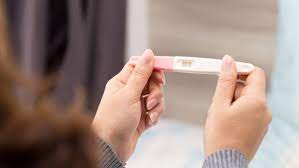How Using This Simple Test Can Boost Your Chances Of Conceiving
Are you thinking about having children? Even though the possibility of being pregnant might be very joyful, many couples find that the process of trying to become pregnant is time-consuming and difficult. According to statistics, 12–15% of couples struggle with infertility, which implies that despite their best efforts, they are unable to conceive after a year. Frustration and hopelessness may result from this circumstance. However, here is a quiz that might help you prepare to have children.
information about urine ovulation tests
Ovulation tests for urine are easily available and available at most pharmacies. They are often offered in boxes with five to seven test sticks inside. Given that the average duration of a menstrual cycle is 28 days, it is recommended to begin testing on the 11th day after the start of your previous menstruation, or around three to five days before to your expected day of ovulation.
A positive test result often indicates that ovulation is anticipated to occur within the following 24 to 36 hours, which is frequently indicated by a particular color shift on the test stick. To guarantee you accurately understand the findings, it’s crucial to refer to the instructions included with the particular test.
knowledge of the fertility window
The fertile window, during which pregnancy is possible, extends from a few hours after ovulation to around five days before to it. The timing of ovulation may be determined using a variety of techniques. These include ultrasonography, a urine test to measure menstrual cycle-related hormone levels, and fertility awareness measures like checking cervical mucus or using a period tracking app.
In a recent thorough research, a Cochrane review—a highly regarded form of review—examined seven randomised controlled trials to see if timing intercourse while utilizing various ovulation monitoring techniques improves the likelihood of conceiving.
studies by specialists
The findings imply that, if the risk of pregnancy after sexual activity is 18% without the use of urine ovulation testing, the likelihood following scheduled sexual activity with urinary ovulation detection would be between 20% and 28%. As stated by the writers in Fatherly Company, “it is yet unknown if this procedure influences the time it takes to get pregnant.
“The discovery that a simple and widely accessible urine test can enhance a couple’s chances of successful conception is quite promising, as it can empower couples with greater control over their fertility journey and potentially reduce the need for infertility investigations and treatments,” said Tatjana Gibbons, a doctoral student at Oxford University and the study’s lead author, in a press release.
It’s important to note that several of the research included in the analysis received funding from companies that provide urine ovulation tests. As a consequence, it’s wise to view the conclusions with some skepticism and take into account any possible study biases.







